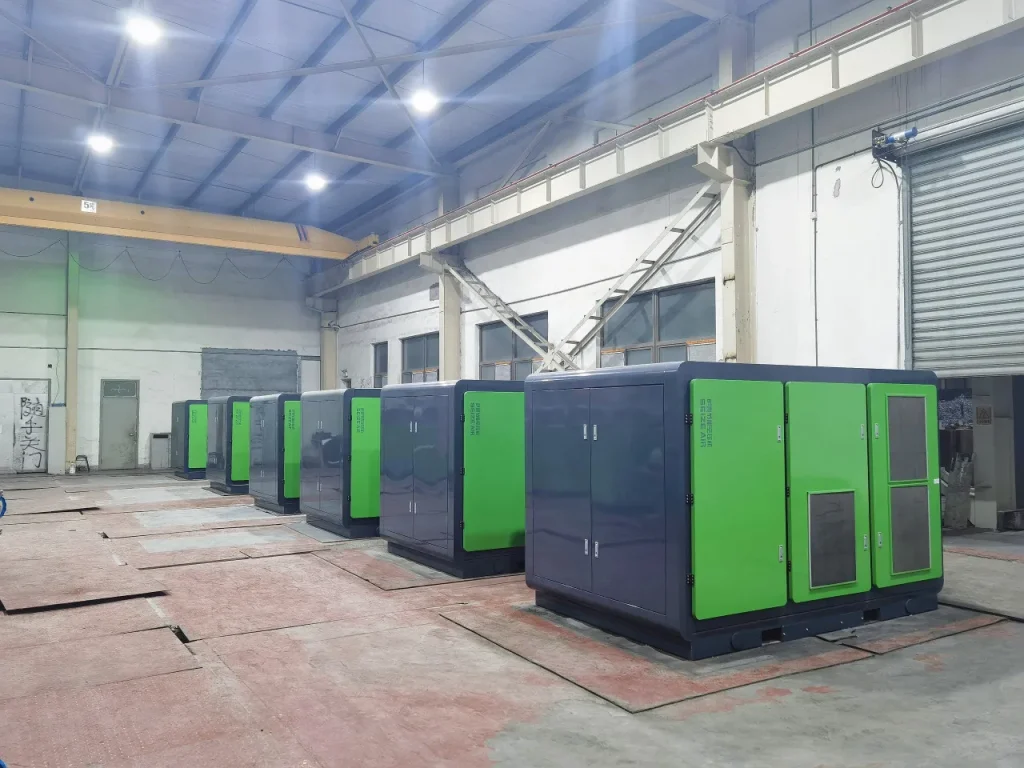Optimization and Intelligent Management of Air Compressors: Improving Efficiency and Reducing Energy Consumption
Optimization and Intelligent Management of Air Compressors: Improving Efficiency and Reducing Energy Consumption
As a key piece of equipment in industrial production, the operation efficiency of air compressors directly affects energy consumption and production costs. Proper setting of operating parameters and the introduction of intelligent management technologies can significantly improve the efficiency of air compressors, reduce energy consumption, and extend the lifespan of the equipment.
1. Optimizing Air Compressor Operating Parameters
Pressure Settings
Set the output pressure of the air compressor according to the production process requirements. Avoid setting excessively high pressures to prevent unnecessary energy waste. In most industrial applications, it is recommended to control the compressed air pressure between 0.6-0.8MPa to meet the needs of most processes.
Airflow Adjustment
Adjust the airflow in real-time according to the changes in air consumption to avoid prolonged operation of the air compressor at low load. Introduce variable frequency drive technology to dynamically adjust the motor speed based on real-time air consumption, achieving adjustable airflow.
Cooling System Management
Regularly check parameters such as water quality, water temperature, and water pressure in the cooling system to ensure effective heat dissipation. Periodically clean the cooler to prevent scale buildup that affects cooling efficiency. Also, regulate the flow rate of cooling water to avoid unnecessary energy waste.
Control System Optimization
Regularly calibrate pressure sensors, temperature sensors, and other control components to ensure the accuracy of the control system. Optimize the control program to achieve automatic startup and shutdown, load-unload switching, and pressure adjustment, improving automation and reducing manual intervention.

2. Strengthening Spare Parts Management
Spare Parts Inventory Management
Arrange spare parts inventory based on the equipment’s operating condition and the consumption of parts. Avoid excessive inventory tying up funds while ensuring sufficient stock to prevent delays in maintenance.
Spare Parts Procurement and Supplier Management
Choose reliable and reasonably priced spare parts suppliers and regularly assess their performance to ensure the quality of parts and timely supply.
Spare Parts Usage and Tracking
Establish a standardized spare parts requisition system and strengthen tracking management of spare parts usage to ensure efficient utilization and timely replacement.
3. Introducing Intelligent Management Technologies
With the development of the Internet of Things (IoT), big data, and artificial intelligence, intelligent management has become an important direction for the future development of air compressors.
Remote Monitoring
Utilize IoT technology to enable real-time remote monitoring of air compressors. Users can check equipment status, operating parameters, and fault alarm information anytime through mobile apps or computer terminals.
Data Analysis and Optimization
Through big data analysis, analyze energy consumption trends, operating efficiency, and fault patterns of equipment to provide a basis for optimizing equipment operating strategies and further reduce energy consumption.
Predictive Maintenance
Utilize artificial intelligence to predict equipment failures based on historical data and real-time operational status. This allows for early detection of potential faults and preventive measures to reduce downtime and maintenance costs.
Intelligent Control
Integrate artificial intelligence algorithms to automatically adjust equipment operating parameters based on air consumption, pressure fluctuations, and other data to achieve more efficient energy management and energy-saving.
By optimizing the operating parameters of air compressors, strengthening spare parts management, and introducing intelligent technologies, not only can the equipment’s operating efficiency be improved, but energy consumption can be reduced, and the stability and safety of production can also be enhanced.

 English
English
 Chine
Chine
 Russia
Russia
 France
France
 Spain
Spain
 Arab
Arab